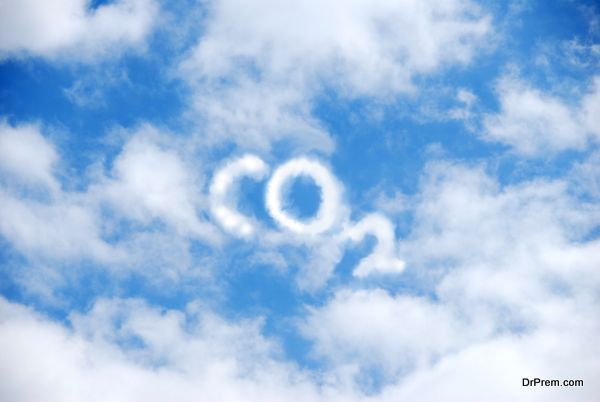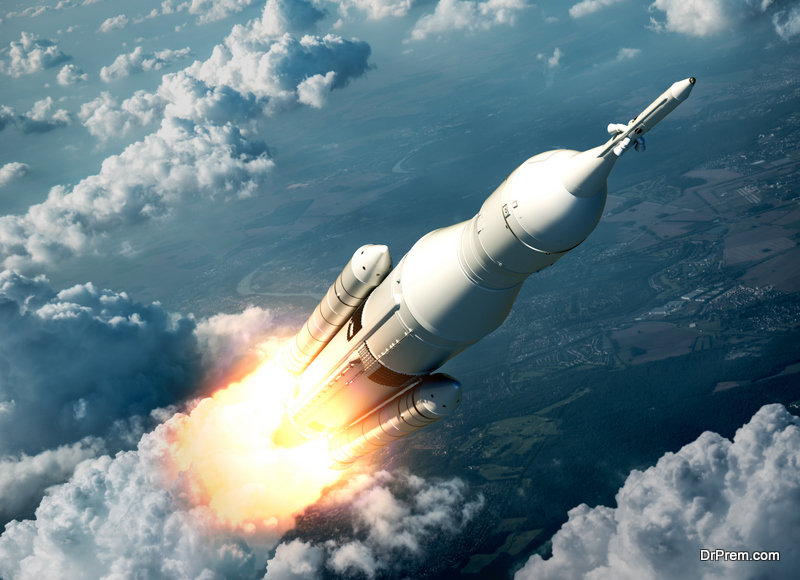The idea of space tourism is round the corner. Sir Richard Branson, the famous space raider from Britain is very enthusiastic about the idea. He is on a massive hype for launching the popularity of space tourism among those who can afford. Consequently, Spaceport America has to its credit building of first-ever commercial runway for private space voyages.
Located in Las Cruces, New Mexico and designed to launch space vehicles for joy rides for passengers, this infrastructure is a big leap closer to the dream of mega travel. Riding on ambitious corporate plans Virgin Galactic, a British Space Flight company has put up a promise of eco-friendly space tourism. But how far would this high voltage entertainment provided to a handful of rich is worthwhile is a thought-provoking question. Launching space flights would lead to more carbon emissions and its obvious impact on the environment can never benefit life on earth!
Space tourism to facilitate climate change and global warming:
 Although the idea of eco friendly space tourism appears thrilling, honeymooning in space has its upshots. Especially when you think of the cumulative impact of 1000 annual voyages over years, doomsday cannot be far away.
Although the idea of eco friendly space tourism appears thrilling, honeymooning in space has its upshots. Especially when you think of the cumulative impact of 1000 annual voyages over years, doomsday cannot be far away.
Studies by space scientists aided by computer simulations indicate space trips can facilitate climate change. It can even bring about warming at the poles and thawing of seasonal ice cover blaming the soot emitted as the culprit.
The first ever thorough simulations done by Martin Ross and team of Aerospace Corporation, Los Angeles, California yields discouraging reports. Negative impact on earth resulting from space trips as revealed by simulation reports puts cold water on plans of space tourism companies. They were preparing to take passengers on routine space vacations targeting 1000 suborbital trips annually. The most dangerous part of the space trip project is the emission of soot which is partly burned fuel. Even emission of carbon dioxide during launching is no match for toxic pollutants given off by the soot.
We talk of eco-friendly space tourism, who would be responsible for the enormity of gross crime choking the universe for the sake of a few affluent holidaymakers? Virgin Galactic spaceship Two that would operate on a reusable system will pump out enough lethal gas from its rubber-burning engine. And that is dehumanizing and hardly eco-friendly!
Emissions from spacecraft are more dangerous:
If 1000 space vehicles fly annually, soot emission would roughly be 600 tonnes. This is lesser than current carbon emissions from aircraft. The menacing part of the story is that the emissions from airplanes are confined to lower atmospheric strata. Its impact on the environment is nothing serious because they are cleansed by rains.
Soot ejected by spacecrafts drifts higher up at least three times the height of airplane flight altitudes. This is about an astounding 40 kilometers above sea level. The poison can stay up there for 10 years, literally forming a shroud of death covering the universe. How good would that be when we dream of prospects of eco-friendly space tourism?
Soot contributing to the warming of poles:
 Further simulation studies revealed soot ejected would raise temperature at the poles. Throughout the year the rise would average around 0.2 ° Celsius touching a maximum of 1°Celsius during winter for each hemisphere. Much of the temperature increase is attributed to action of ozone. Michael Mills of the National Centre for Atmospheric Research in Boulder, Colorado is kind of baffled. He was trying to figure out black carbon’s role in temperature rise.
Further simulation studies revealed soot ejected would raise temperature at the poles. Throughout the year the rise would average around 0.2 ° Celsius touching a maximum of 1°Celsius during winter for each hemisphere. Much of the temperature increase is attributed to action of ozone. Michael Mills of the National Centre for Atmospheric Research in Boulder, Colorado is kind of baffled. He was trying to figure out black carbon’s role in temperature rise.
The possible reason was that soot increased the quantity of polar ozone. It is the interaction of the ozone layer with sun’s radiation that has caused temperature to mount. Estimates of black carbon generation from Virgin Galactic’s rubber-burning engine were based on assumptions. Use of hybrid rocket models in future would increase the chance of soot pollution bringing in a dramatic change in earth’s climate profile.
Real data was lacking, so extrapolations put the number to 60 grams from every kilogram of fuel burned. In absence of emission quantifications from rubber burning rockets, scientists extrapolated from data on rockets using kerosene as fuel. Results revealed soot delivery of 20 to 40 grams for every kilogram of kerosene burned.
Burned rubber is expected to inject more pollution than kerosene. But the quantitative fact is as important as the qualitative one. In absence of data for burned rubber 60 kilograms of soot is hopefully an intelligent surmise.
Rays of hope for eco-friendly tourism:
Eco-friendly space tourism is possible, at least a section of space enthusiasts are hopeful about it. Jeff Greason, CEO of X Cor Aerospace, Mojave in California is designing a sub-orbital space tourism vehicle called Lynx. He advocates the use of kerosene as flight fuel which is way cleaner and generates far less soot pollution.
Further, hydrocarbon and nitrous oxide burning engines are less expensive than kerosene and liquid oxygen run engines. These engines would take care of any damage done to the atmosphere. Till date, 250 people have reserved their seats paying total deposit money exceeding USD 35 million. Seeing the planet from outside would be a lifetime achievement.
Passengers can leave their seats, drift at zero gravity and relish a 360 ° view extending to 1000 miles. What good it is to life and its wonderful opportunities around if modern science cannot address the issues of soot emission? Measure it accurately, gauge the possible harm delivered and find ways to resolve it with adequate safety measures.
Eco-friendly space tourism could be a reality. Advocates of space voyage argue it would broaden the horizon of travel experience. No one cries foul when lumberjacks hack down trees of Canada and Amazon. No voice of protest is heard when aircraft spews carbon dioxide over African game reserves. Only when the hope of eco-friendly space tourism is at the threshold someone from some corner of the world demonstrates awareness for atmospheric pollution!
Warning signals:
The possibility of eco-friendly space tourism is currently facing hurdles from many quarters, especially from environmentalists. Research by the University of Colorado has tabled concerning reports where space tourism is utterly discouraged.
The threat of massive greenhouse gas emissions is a future catastrophic force to reckon. Keeping this knowledge in mind any attempt at an entertaining space trip is a show of disregard to nature. This could breed lethal consequences.
Not only the mechanical soot emission, but also environmental safety concerns would be significant considering the carbon footprint of each holidaymaker. 1000 suborbital trips in a year would take a huge spacecraft load of passengers up there. Think of the quantum of cumulative carbon footprints left by these passengers in virgin space!
Rocket launches till now had been exempted from environmental preservation rules violation norms. The legislation had been soft for space launches considering scientific breakthroughs for the greater benefit of mankind. When spacecrafts are taking people around earth’s orbit to have fun rides fattening the bottom line of space travel companies, legislation should be tightened.





